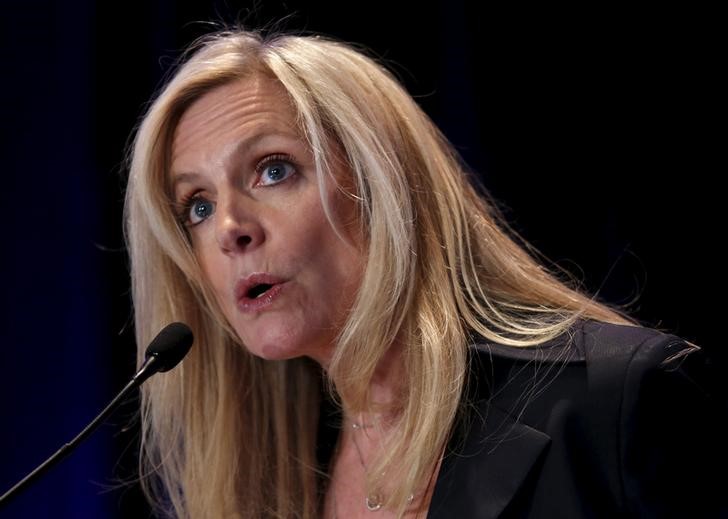(Bloomberg) -- Federal Reserve Vice Chair Lael Brainard said expectations for half-percentage-point increases in interest rates this month and next were reasonable and saw no case for pausing the central bank’s tightening campaign afterward.
“From where I sit today, market pricing for 50 basis points, potentially in June and July, from the data we have in hand today, seems like a reasonable path,” Brainard said Thursday in an interview with CNBC. “Right now it’s very hard to see the case for a pause. We’ve still got a lot of work to do to get inflation down to our 2% target.”
US central bankers raised rates by half a percentage point last month and signaled they’ll do so again at the next two meetings as they try to suppress demand and tamp down the hottest inflation in decades. Minutes from their May meeting suggested that the rapid pace of policy tightening would position officials to potentially slow the hiking cycle later this year if needed.
The Fed is also tightening financial conditions by shrinking its bloated balance sheet at a monthly pace that ramps up to $95 billion in September. The balance sheet more than doubled in size to $8.9 trillion as the central bank aggressively bought assets to support the US economy during the first two years of the pandemic.
Brainard, who was sworn in as vice chair last week, echoed this desire for flexibility, calling it “harder to say” what the Fed should do once it got to September.
“If we don’t see the kind of deceleration in monthly inflation prints, if we don’t see some of that really hot demand starting to cool a little bit, then it might well be appropriate to have another meeting where we proceed at the same pace,” she said. “If we are seeing a deceleration in the monthly prints, it might make sense to be proceeding at a slightly slower pace.”
Financial markets have swung sharply as investors fret the Fed’s efforts to curb inflation could trigger a recession, and there are some early signs that its campaign to cool the economy is having an impact. The Fed’s Beige Book survey released Wednesday suggested the pace of growth was downshifting, with four of the central bank’s 12 districts noting that growth had slowed.
Existing home sales have slowed as mortgage rates have increased but other parts of the economy have maintained momentum. Recent data for retail sales and factory production show the economy remained strong as it began the second quarter. Employment is also still robust with payrolls rising by 428,000 in April, and another 325,000 forecast for May when the Labor Department releases the report Friday.
The Ukraine war and rolling Covid-19 lockdowns in China added more supply constraints to the global economy, and underpinned an inflation rate that is already far above the Fed’s target, rising 6.3% for the 12 months ending April.
(Updates with more Brainard comment in sixth paragraph.)
©2022 Bloomberg L.P.
